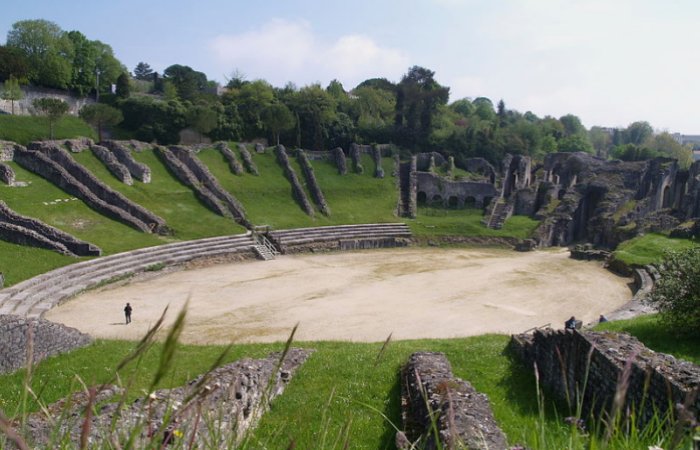Jan Bartek – AncientPages.com – Constructed in the 1st century, around 40 A.D. during the reign of Roman Emperor Claudius, the huge amphitheater of Saintes in France, could accommodate around 15,000 spectators.
This magnificent ancient structure is the largest of western Roman Gaul buildings and the pride of the city of Saintes that before the French Revolution was the capital of the old province of Saintonge. Funded in the 1st century, Saintes is a city of art and history with an important architectural and religious heritage that should be preserved for future generations.

Gallo-Roman Amphitheater Of Saintes. Credit: Myrabella – Wikipedia
Like many other ancient structures, the condition of this once magnificent amphitheater has been deteriorating, and degradation is increasing day by day.
The former mayor of Saintes, Jean-Philippe Machon previously wanted to renovate the amphitheater and organize shows at the ancient site. His controversial idea was not welcomed by the inhabitants of Saintes, and the project was abandoned.
However, a new project starting soon will restore the Roman-Gaul amphitheater to its former glory.

The amphitheater was used for entertainment, performances, and sports. Credit: France 3 Nouvelle-Aquitaine
The Saintes’ amphitheater was selected in 2019 by the Heritage Mission among the 18 major French sites to be restored. The work, the cost of which is estimated at 4 million euros, will begin before this summer.
“The first phase of work aims to consolidate the masonry, in particular those of the two monumental gates, that of the Living, which the victorious gladiators borrowed, and that of the ᴅᴇᴀᴅ, through which the bodies of the gladiators and the animals put to death were taken out.
Today, stones threaten to fall, which poses a major safety problem. The adjacent spans, arches, and vaults will also be the subject of conservation work. The second phase of these safeguard works will aim to find the Gallo-Roman water network in order to restore it,” the French television reports.

The future of the amphitheater has long been uncertain, but now we know the structure will be preserved. Credit: France 3 Nouvelle-Aquitaine
“The goal is to find this network and try to rehabilitate the existing aqueduct to prevent that every time it rains, the site is flooded, which contributes to its degradation. And then this basin will serve as a retention basin. The water will then be led to the stormwater network. It is expert work,” Christophe Bironien, Director General of Services for the City of Saintes said.

It’s an ancient place that should be preserved for future generations. Credit: France 3 Nouvelle-Aquitaine
The amphitheater site will remain open to visitors throughout the restoration, but once the site is restored it will be secured and there will be no concerts and shows there.
The Gallo-Roman amphitheater is a heritage site that along with the Germanicus Romanesque arch, the Abbaye-aux-Dames abbey and its magnificent church of Romanesque style, and the Saint-Pierre cathedral are examples of Saintes’ rich historical past
Written by Jan Bartek – AncientPages.com Staff Writer





